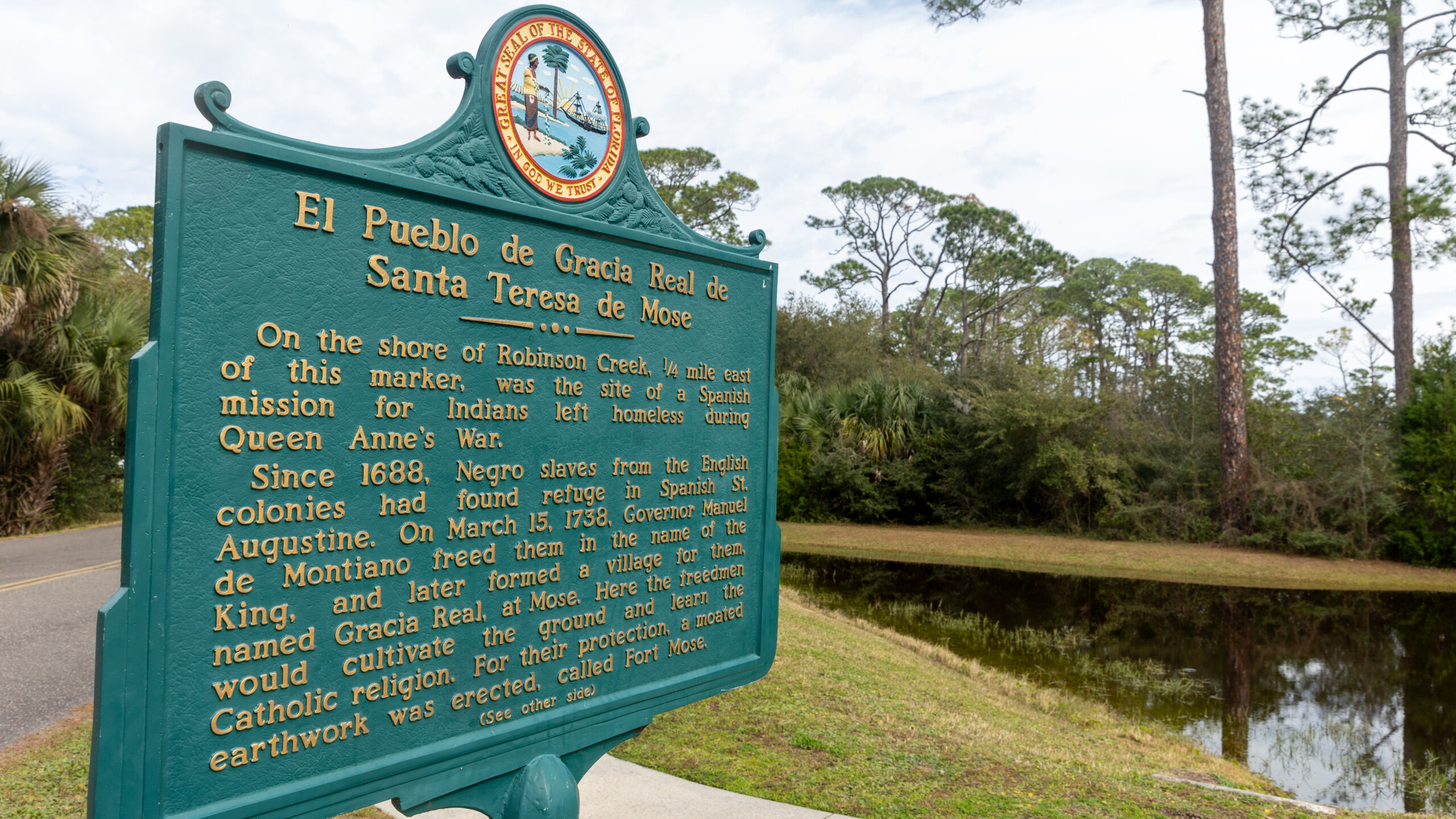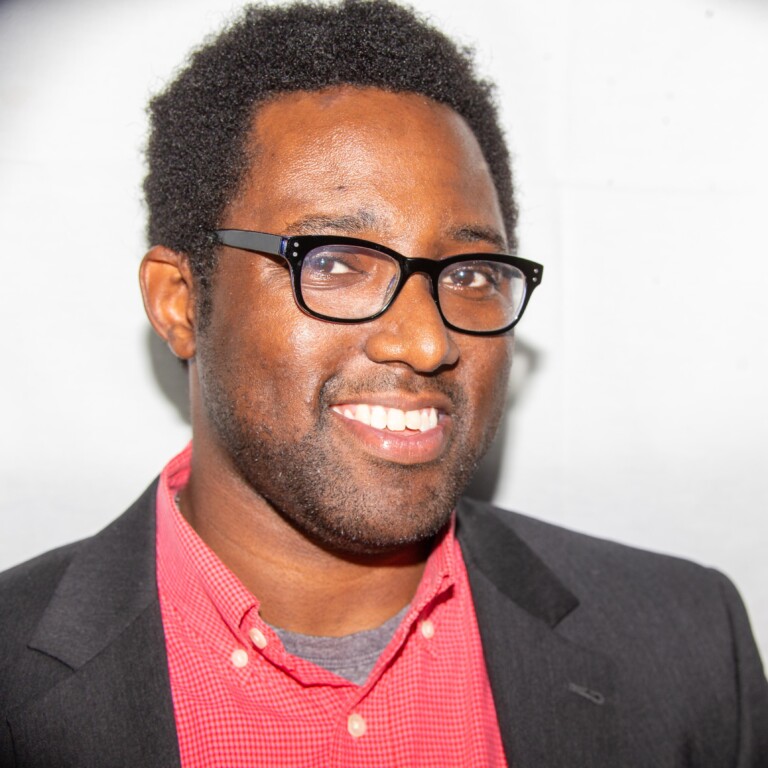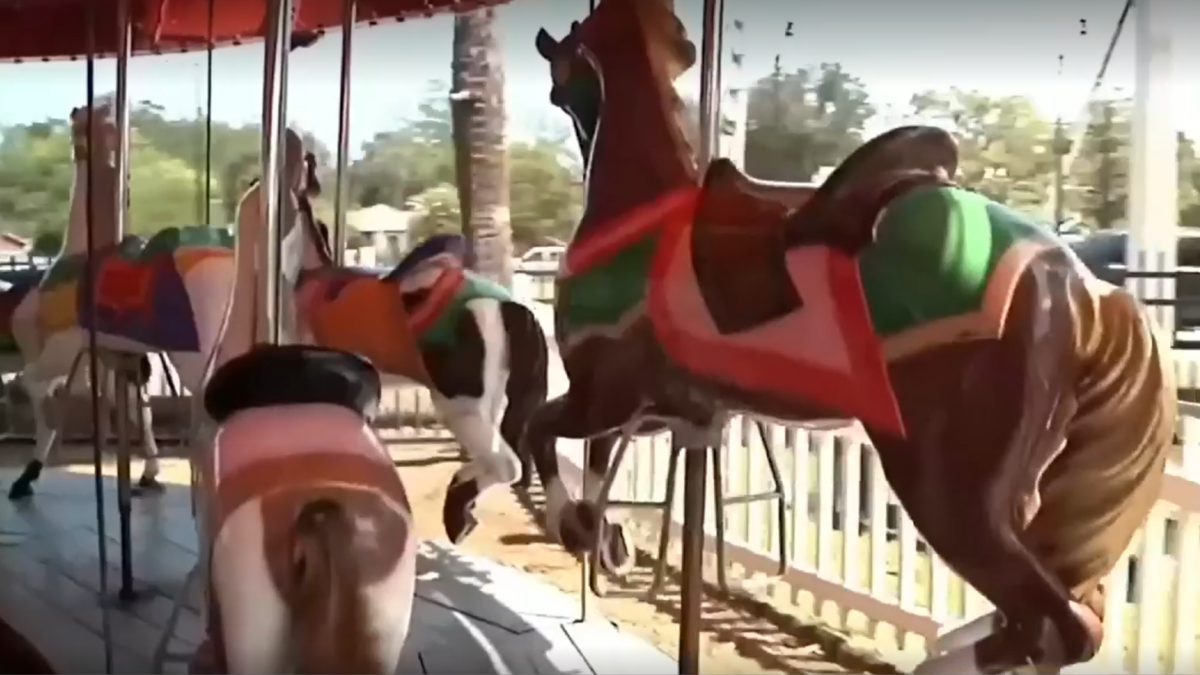The marshes outside America’s oldest city are a bedrock of freedom whose song people hope will reverberate beyond the pine trees and palmetto scrub.
Fort Mose became first free African settlement in what is now the United States in 1738. Friday morning, more than 100 people gathered at Fort Mose State Park to break ground for a project that will reconstruct what the settlement is believed to have resembled in the 18th century.
Work is slated to begin this spring and finish by the end of the year.
Fort Mose State Park is 500 yards from the city gates that welcome people into St. Augustine. It’s on the site of a settlement that was first uncovered in the 1970s by a team from the University of Florida.
In the decades since the initial discovery, academics, historians and the St. Johns County community have sought to share the story of a community that was destroyed by the British in the Battle of Bloody Mose in 1740.
The 41-acre site became a state park in 1989. In 2009, an interactive museum opened on site. But fort was long gone. According to the Fort Mose Historical Society, the fort was abandoned and the site eventually swallowed by marsh.
The society’s president, Charles Ellis, says a community collaboration made Friday morning possible.
The reconstruction project began in 2012. Since then, the Florida State Parks Foundation received a a $933,000 state grant to erect the building to complement the dollars from some of Northeast Florida’s most notable nonprofits and businesses.
“When they built the museum out there and we were able to do the live reenactments throughout these grounds out here, it gave our visitors, the members, the nation and our world and opportunity to come see what the story was all about,” Ellis said.
A running joke among the St. Johns County community has been “Where’s the fort?”
Local fourth and fifth grade students often visit the park and museum. And, that is a question that has been asked since those tours began. Ellis, as well as reenactor Alma Melvin, say that will be a thing of the past once the reimagined Fort Mose is finished.
“That gives us another item to support the story and have the reenactment come with that story,” Ellis said.
Ellis wore an 18th century-era wool coat similar to what the Spanish wore when its governor Manuel de Montiano freed local Africans and allowed them to form their own community that was named Gracia Real at Mose.
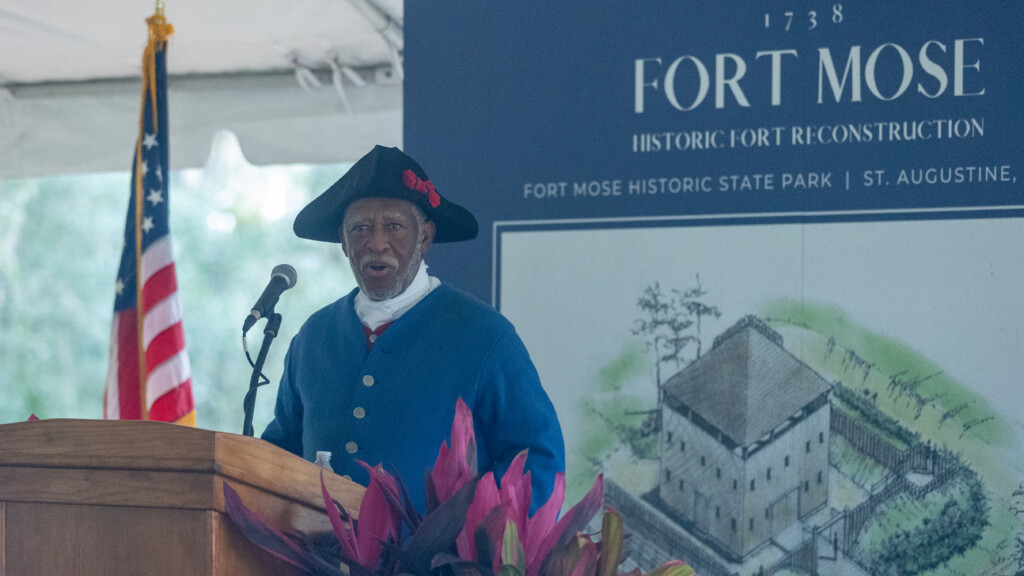
Sarah Arnold wore a more modern coat to protect her from the rain. The chairwoman of the St. Johns County Commission says the county is fully committed to incorporating Fort Mose into the area’s array of historical offerings.
“It’s amazing. We focus so much downtown on history. To bring it uptown and to be able to tell the story of not just the Spanish and the colonial history that’s here, but the Black history that started here is going to be tremendous.”
Arnold hopes the local investment in time, talent and dollars will help St. Augustine attract the Florida Museum of Black History when a site is announced later this year.
Arnold’s commitment to the story of Fort Mose is not nearly as long as that of Kathy Deagan, a professor emerita at the University of Florida who first visited what is acknowledged as Fort Mose in 1972.
Deagan, the distinguished research curator and Lockwood professor of archaeology, says it was indescribable to be on site Friday.
“I really thought our part was over years ago, because the Fort Mose Historical Society really picked up the pace and made things happen,” Deagan said. “And, I was so pleased to watch it happen. Now, this representation that’s based on our work – Jane Landers’ work, mine and other people’s work—is really amazing.”
Landers is the Gertrude Conaway Vanderbilt professor of history and director of the Slave Societies Digital Archive at Vanderbilt University.
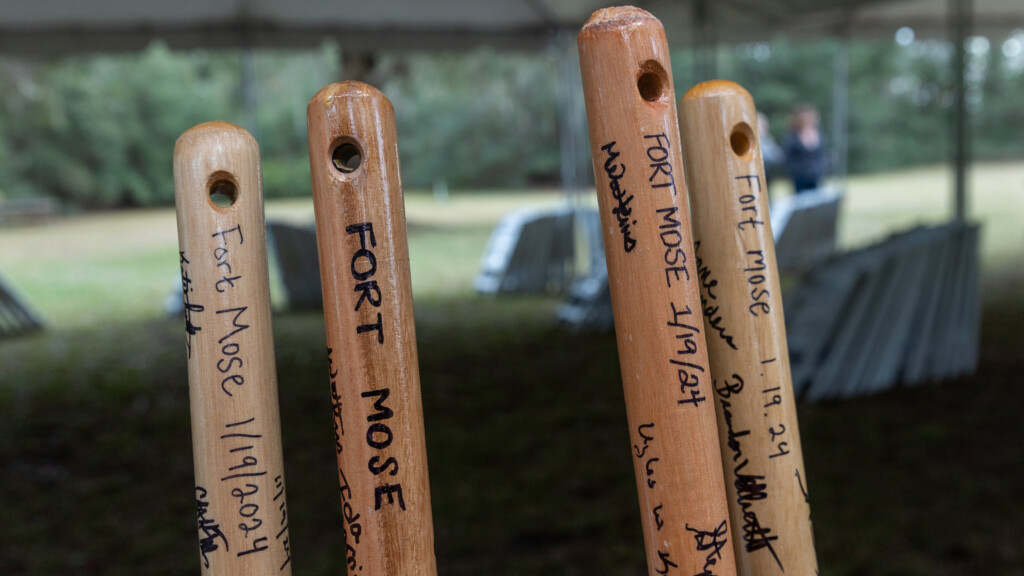
Robert Yero, a district chief for Florida State Parks, says Fort Mose embodies the organization’s commitment to preserve, interpret and restore the state’s natural and cultural resources.
“This historic fort reconstruction will transform the experience of visiting this park,” Yero said. “For the first time ever, guests of all ages, and from all over the world, will be able to see, hear, touch and experience a portrayal of what life was like at the first, legally sanctioned free Black community in what is now the United States.”


